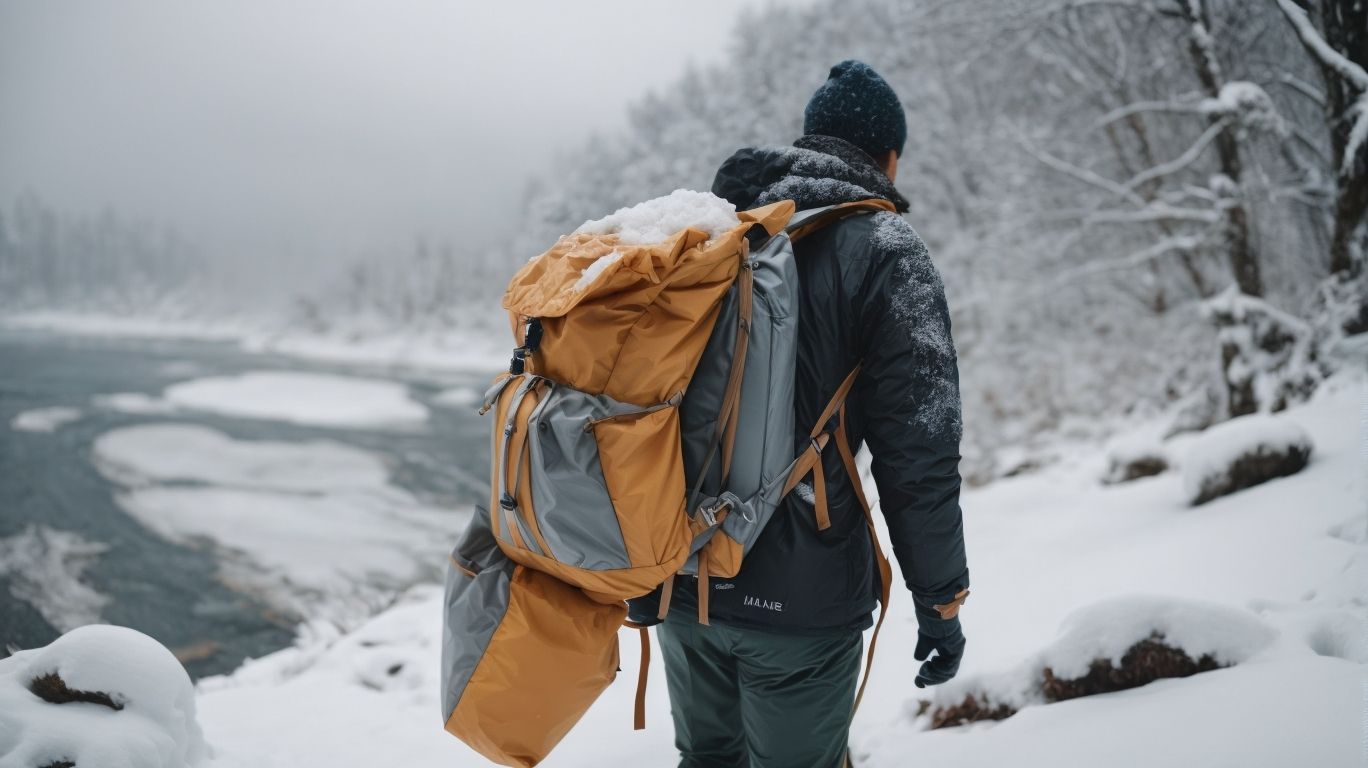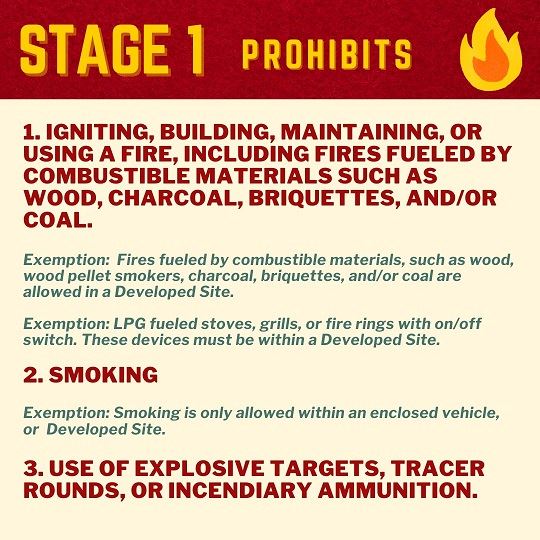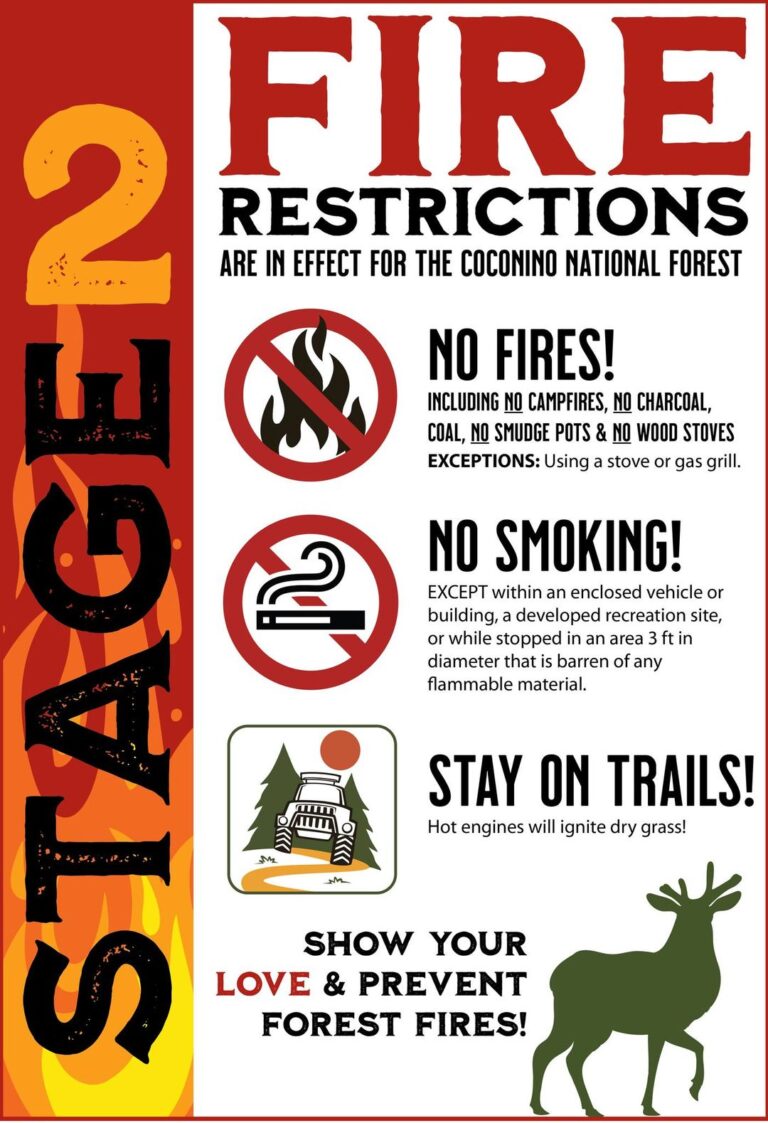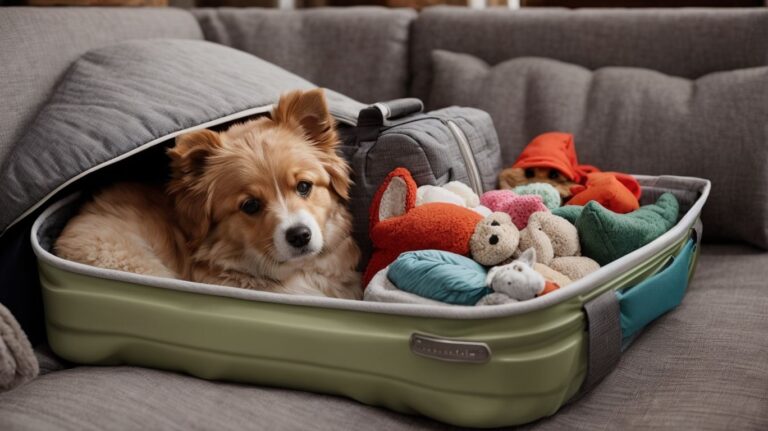Cold weather emergency preparedness is a critical aspect of ensuring the safety and well-being of individuals and families during the colder months. From having essential items to preparing your home and knowing what to do during a cold weather emergency, being well-prepared can make a significant difference in adverse situations.
In this comprehensive guide, we will delve into the importance of cold weather emergency preparedness, essential items needed, preparing your home, actions to take during a cold weather emergency, and tips for staying safe and healthy.
Whether you are facing a snowstorm or freezing temperatures, being equipped with the right knowledge and resources is key to effectively navigating cold weather emergencies.
What is Cold Weather Emergency Preparedness?
Cold Weather Emergency Preparedness involves taking necessary precautions and planning for adverse winter weather conditions and potential emergencies that may arise due to extreme cold, snowstorms, blizzards, or ice storms.
It is essential to anticipate challenges such as power outages, impassable roads, and limited access to essential services during cold weather emergencies. As part of advanced planning, it is crucial to stock up on supplies like non-perishable food, bottled water, blankets, batteries, and a first-aid kit.
Staying informed about weather forecasts, creating a communication plan for family members, and safeguarding against carbon monoxide poisoning are vital safety measures for coping with winter weather emergencies.
Why is Cold Weather Emergency Preparedness Important?
Cold Weather Emergency Preparedness is crucial for safeguarding individuals and communities from the potential hazards of extreme cold, including frostbite, hypothermia, and other winter-related health risks.
It is imperative to have a comprehensive understanding of cold weather safety measures, such as dressing in layers, using proper insulation, and staying dry to prevent heat loss. Adhering to winter safety guidelines, such as avoiding overexertion and ensuring adequate nutrition and hydration, plays a pivotal role in minimizing the risk of cold-related illnesses.
Effective mitigation of health risks associated with exposure to extreme cold involves ensuring access to warm shelter, appropriate heating sources, and regular monitoring of vulnerable populations, such as the elderly and children, to prevent cold-related emergencies.
What are the Essential Items for Cold Weather Emergency Preparedness?
Essential items for Cold Weather Emergency Preparedness encompass a range of emergency supplies and equipment vital for winter survival and safety.
Warm Clothing
Warm clothing is a fundamental component of Cold Weather Emergency Preparedness, providing essential protection against the cold and minimizing exposure-related risks during winter weather events.
It is crucial to prioritize adequate insulation, such as thermal layers, jackets, hats, gloves, and boots, to maintain body heat and prevent hypothermia. Proper attire also aids in reducing the risk of frostbite and other cold-related health hazards, ensuring resilience in adverse weather conditions. Incorporating moisture-wicking fabrics and waterproof materials in the clothing ensemble enhances comfort and protection, further fortifying individuals against the harsh elements of winter.
Shelter and Heating Supplies
Shelter and heating supplies are critical elements of Cold Weather Emergency Preparedness, ensuring access to warmth and protection during winter weather emergencies and potentially cold weather alerts.
It is crucial to have adequate emergency shelter options and heating supplies readily available to address the unpredictable nature of winter weather. A well-prepared emergency kit should include a portable shelter, such as a tent or tarp, to protect from harsh conditions. Having alternative heating sources, like portable propane heaters or firewood, ensures that individuals can stay warm in the event of power outages or heating system failure. Being equipped with these supplies can make a significant difference in maintaining safety and comfort during cold weather emergencies.”
Food and Water
Access to sufficient food and water is essential for Cold Weather Emergency Preparedness, necessitating the inclusion of emergency kits and the development of winter weather checklists for adequate preparedness.
These provisions become even more critical during cold weather emergencies when access to resources may be limited. It is crucial to include non-perishable food items such as canned goods, energy bars, and bottled water in emergency kits to sustain oneself and family members. Along with food and water, it’s prudent to pack essential items like a portable water filter to ensure access to safe drinking water.
Developing a winter weather checklist helps in ensuring that these provisions are regularly checked and replenished, guaranteeing readiness in the face of cold weather emergencies.
First Aid Kit
In Cold Weather Emergency Preparedness, a well-equipped first aid kit is indispensable for addressing injuries, illnesses, and potential risks such as frostbite, emphasizing the importance of proactive measures for frostbite prevention.
It should include items such as sterile gauze, adhesive bandages, antiseptic wipes, and tweezers for treating wounds as well as thermal blankets, hand warmers, and extra clothing to address cold-related issues.
Having a basic knowledge of first aid procedures in cold weather emergencies can significantly improve the chances of recovery and minimize the impact of extreme temperatures on one’s health.
A first aid kit tailored for cold weather is an essential component of any comprehensive emergency preparedness plan.
Emergency Communication Devices
Emergency communication devices are vital tools for Cold Weather Emergency Preparedness, enabling effective coordination, information dissemination, and the implementation of a comprehensive weather emergency plan.
These devices play a crucial role in enabling rapid communication between emergency responders, allowing them to assess the situation, coordinate resources, and provide timely assistance to those affected. In cold weather emergencies, such as blizzards or snowstorms, communication devices help in alerting the public about impending weather conditions, providing safety instructions, and sharing updates on shelter locations and available resources. They aid in establishing communication channels for individuals to seek help or report emergencies, thereby contributing to a more organized and efficient response effort.
Tools and Supplies for Vehicle Emergencies
Tools and supplies for vehicle emergencies are essential for Cold Weather Emergency Preparedness, ensuring readiness to address potential challenges and hazards related to winter driving safety and cold weather emergency procedures.
These essential tools and supplies play a critical role in winter car kits, providing drivers with the necessary equipment to handle unexpected situations such as icy road conditions, dead batteries, or flat tires. By including items such as jumper cables, a tire repair kit, a shovel, and a flashlight in their vehicles, individuals can proactively prepare for emergencies, enhancing their ability to stay safe and minimize disruptions during winter weather.
The implementation of cold weather emergency procedures is made more effective with the presence of these tools, enabling swift and efficient responses to urgent situations on the road.
How to Prepare Your Home for Emergencies?
Preparing your home for Cold Weather Emergencies involves essential measures such as winterizing your home and ensuring proper maintenance of heating systems to mitigate potential cold weather hazards and risks.
This includes insulating pipes to prevent freezing, sealing any drafts to keep the interior warm, and checking for any leaks in the roof or windows. Properly maintaining your heating system, such as changing filters and having it professionally serviced, is crucial to ensure it functions efficiently during the colder months.
Stocking up on emergency supplies like blankets, flashlights, and non-perishable foods is advisable in case of power outages or inaccessible roads due to snow and ice.
Insulate Your Home
Proper insulation of your home plays a pivotal role in Cold Weather Emergency Preparedness, offering protection against fluctuating temperatures and the need for cold weather gear to enhance safety and comfort.
It is essential to have a well-insulated home to ensure that the interior remains warm and cozy during colder months. In addition to providing comfort, proper insulation helps in conserving energy and reducing heating costs. This is especially important during winter weather advisories, where a well-insulated home can provide a safe haven from the harsh outdoor conditions.
By minimizing heat loss, insulation also reduces the reliance on cold weather gear, making it easier to maintain a comfortable indoor environment.
Keep Emergency Supplies Handy
Readiness to access emergency supplies is essential for Cold Weather Emergency Preparedness, necessitating the maintenance of these supplies and the availability of emergency contact information for swift response to potential winter weather watch situations.
It is vital to ensure that the emergency supplies are well-stocked and up to date, including items such as blankets, non-perishable food, water, batteries, and a first-aid kit. These supplies can make a significant difference during severe winter weather conditions, ensuring that individuals and families are equipped to handle unexpected situations.
Keeping emergency contact information handy, including local emergency services, utility providers, and family contacts, can facilitate timely assistance and support during cold weather emergencies.”
Have a Plan for Power Outages
Developing a plan for power outages is a critical aspect of Cold Weather Emergency Preparedness, requiring the implementation of winter safety precautions and the dissemination of winter safety education to mitigate risks during cold weather emergencies.
This entails preparing alternative heating sources such as generators or fireplaces, stocking up on non-perishable food and water, and ensuring adequate insulation to maintain warmth. Winter safety education plays a crucial role in creating awareness about the dangers of hypothermia, frostbite, and carbon monoxide poisoning.
Educating individuals on proper winter driving techniques and the importance of dressing in layered clothing can significantly reduce the risks associated with cold weather conditions.
What to Do During a Cold Weather Emergency?
During a Cold Weather Emergency, it is essential to stay updated on relevant winter weather resources and adhere to effective winter storm preparedness measures to ensure safety and well-being.
This includes regularly checking weather forecasts, securing adequate supplies such as food, water, and emergency kits, and insulating homes to retain warmth. It’s also important to dress in layers and limit outdoor exposure, as well as to keep communication devices charged and emergency contacts informed of your whereabouts.
Stay informed about road conditions and follow local authorities’ advice. Consider using alternative heating sources safely and ensuring that your vehicle is equipped with emergency supplies in case of are stranded during a winter storm.
Stay Inside and Stay Warm
During a cold weather emergency, it is imperative to stay inside, maintain warmth, and raise awareness about the risks of extreme cold and hypothermia to ensure personal and community safety.
Taking shelter indoors not only protects individuals from the biting cold but also helps to prevent the onset of hypothermia – a condition where the body loses heat faster than it can produce. By bundling up in warm clothing, consuming hot beverages, and sealing up drafts, individuals can significantly reduce the risk of dangerous cold-related health issues.
It’s crucial to keep an eye out for signs of hypothermia in ourselves and those around us, such as shivering, confusion, or exhaustion.
Conserve Energy and Resources
Conserving energy and resources is essential during a cold weather emergency, necessitating effective weather emergency communication and the availability of emergency shelter for maintaining safety and comfort.
Efficient use of heating systems, such as programmable thermostats and proper insulation, can significantly reduce energy consumption. Encouraging the use of energy-efficient appliances and powering down non-essential electronics can further conserve resources.
Providing clear guidance on finding emergency shelters and utilizing transportation services during extreme weather conditions is crucial to ensuring the safety and well-being of individuals and communities.
Monitor Weather Updates and Emergency Alerts
Continuous monitoring of weather updates and emergency alerts is crucial during a cold weather emergency, requiring awareness of cold weather alerts and the dissemination of winter safety education to mitigate risks and ensure timely responses.
Staying informed about rapidly changing weather conditions is key to staying safe in extreme cold. By understanding the cold weather alerts, people can take necessary precautions to protect themselves, their families, and their homes.
Winter safety education can play a significant role in equipping individuals with the knowledge and skills to navigate through challenging cold weather situations. It’s essential to heed the warnings and advisories provided by local authorities and take proactive steps to stay safe during cold weather emergencies.
Check on Neighbors and Loved Ones
Checking on neighbors and loved ones forms a critical component of Cold Weather Emergency Preparedness, necessitating the formulation of an effective emergency response plan and the adoption of winter safety precautions to ensure the well-being of all community members.
It is essential to recognize the vulnerability that cold weather brings to the elderly, young children, and those with pre-existing health conditions. By actively checking on neighbors and loved ones, we can offer assistance to those who may be struggling to cope with the harsh conditions.
The establishment of communication networks within the community can facilitate the swift dissemination of important information and support during a cold weather emergency. Through collective vigilance and support, we can help safeguard our community’s welfare during challenging winter circumstances.
How to Stay Safe and Healthy During a Weather Emergency?
Staying safe and healthy during a cold weather emergency involves proactive measures for frostbite prevention, awareness of hypothermia first aid, and adherence to cold weather safety tips to safeguard well-being.
This includes dressing in layers, covering exposed skin, and using heating sources safely. It’s also crucial to stay dry and hydrated, as moisture can increase the risk of hypothermia. It’s important to be mindful of potential hazards like icy pathways and take necessary precautions when venturing outdoors.
Being aware of these preventive measures and staying informed about weather conditions are essential for ensuring safety and well-being in cold weather emergencies.
Avoid Frostbite and Hypothermia
Preventing frostbite and hypothermia is paramount during a cold weather emergency, necessitating comprehensive winter safety education and measures to mitigate potential cold weather health hazards for personal and community well-being.
Ensuring that individuals are equipped with the knowledge and resources to protect themselves from the dangers of extreme cold is crucial. Proper attire and understanding the signs of frostbite and hypothermia can save lives during harsh weather conditions. Promoting awareness about shelter options and the importance of staying dry and warm can help prevent cold-related health issues.
By educating the public on these preventative measures, communities can ensure the safety and well-being of their members during winter weather emergencies.
Stay Hydrated and Eat Nutritious Foods
Maintaining hydration and consuming nutritious foods are essential precautions against winter weather hazards during a cold weather emergency, necessitating the implementation of effective emergency response strategies to safeguard well-being.
In cold weather, the body’s need for water increases due to the dry air and the potential for dehydration. Consuming warm beverages and soup can help maintain hydration levels. Foods high in vitamins and nutrients, such as fruits, vegetables, and lean proteins, can support the immune system and provide essential energy.
It’s crucial to be prepared with these essentials to combat the challenges of cold weather emergencies and ensure personal well-being amid harsh conditions.
Use Caution When Clearing Snow and Ice
Exercising caution when clearing snow and ice is pivotal for Cold Weather Emergency Preparedness, requiring adherence to winter safety guidelines and effective strategies for snow removal to mitigate potential risks and accidents.
It is crucial to understand the significance of proper snow and ice removal, particularly during cold weather emergencies. This includes using the right equipment and techniques to prevent slips and falls, as well as ensuring proper visibility for vehicles and pedestrians. Being aware of potential hazards such as ice dams and roof collapses is essential.
By following winter safety guidelines and employing effective snow removal strategies, individuals can contribute to creating safer environments during harsh weather conditions.”






